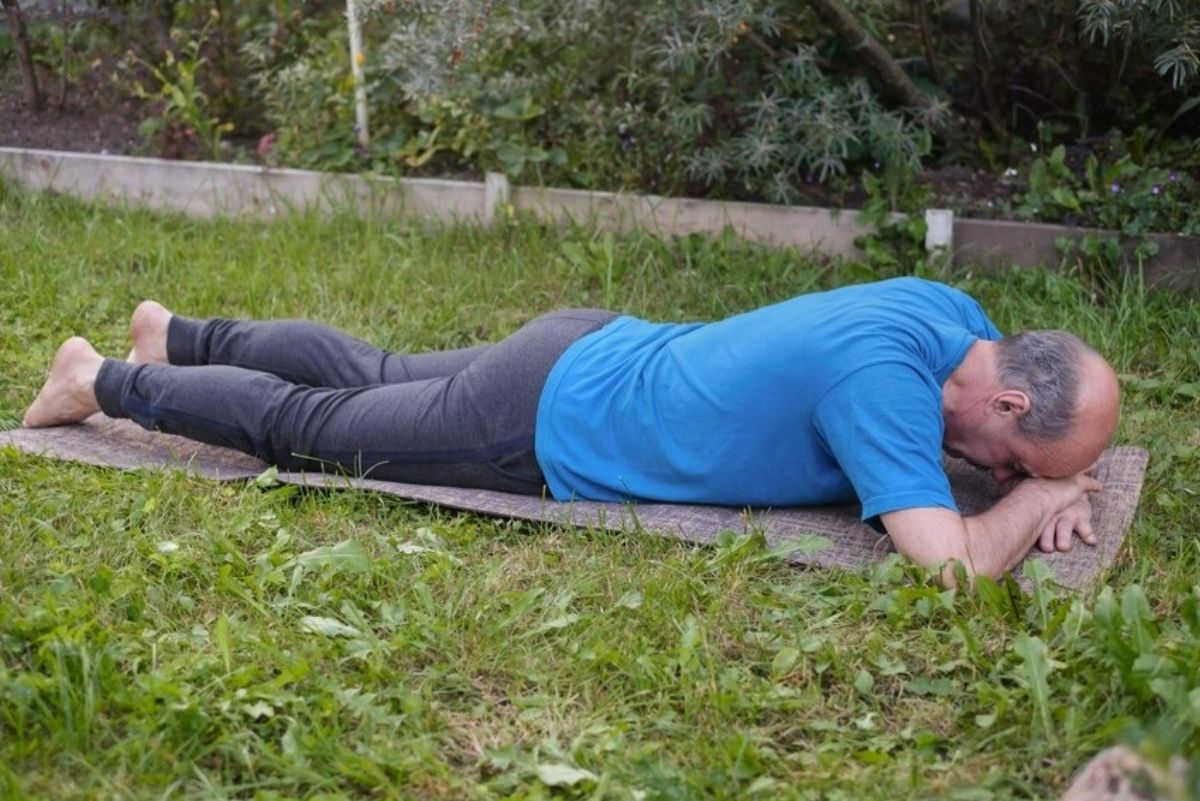Alzheimer’s disease is the most common cause of dementia affecting about 5-6% of people in the age group of 65-70 years in India. Research shows that as India’s population ages, the number of people suffering from dementia and Alzheimer’s disease is set to reach 7.6 million by 2030. While there is no cure for the disease yet, yoga can play an important role in prevention and improvement of symptoms in patients. The age-old practice can also improve the quality of life for both patients and caregivers.
One of the main benefits of practicing yoga is that it reduces stress which can be an extremely worrying factor for Alzheimer’s patients. Stress can cause inflammation in the central nervous system and body, hormone dysregulation, overstimulation of the sympathetic nervous system, and compromise quality of life. However, with regular practice of yoga, Alzheimer’s patients can reduce stress and inflammatory factors which can help them deal more effectively with the body’s stress response.
How can yoga make a difference in the lives of Alzheimer’s patients?
Alzheimer’s is a progressive disease that causes brain cells to die and the brain to shrink. Yoga can help stimulate the neuroplasticity of the brain or help recover from injuries and form new connections by incorporating different parts of it based on practice components such as pranayama, postures, chanting, visualization and concentration.
In fact, a 2018 study published in the International Journal of Environmental Research and Public Health concluded that yoga may be an effective and safe intervention for enhancing cognitive function in people 60 years of age or older. Other studies have also revealed that yoga practices that include postures, meditation exercises, and pranayama can improve people’s ability to focus and process information.
Yoga for Alzheimer’s patients
- Paschimottanasana: Paschimottanasana is a forward bend bend pose that stretches the hamstrings and back muscles by folding the upper body forward over the legs. This pose offers many benefits especially for people suffering from high blood pressure and diabetes. Its biggest health benefit is that it calms the body and relaxes the mind. It also helps in proper blood circulation which relaxes the mind and reduces insomnia, depression and anxiety.
- Vajrasana: It is the best condition for blood circulation to flow to the digestive organs, and this makes them work effectively. Sitting in Vajrasana for long periods of time can have emotional and spiritual benefits and can help stabilize the mind. It also helps bring the body and mind into a meditative state. Regular practice of this pose helps in the prevention and treatment of psychological disorders, hypertension and stress.
- Vrikshasana: Because Vrikshasana is primarily a balancing pose, it helps improve balance both physically and emotionally. When practiced on a regular basis, it creates a sense of calm and balance. Besides its physical benefits like hip and leg strength, Vrikshasana creates a sense of balance in the body. It also translates into mental well-being, focus and concentration. Apart from that, it also helps stabilize the nervous system, making it work at its best. Apart from its qualities of enabling mental performance, the pose is also good for self-esteem and warding off depression and mood swings.
- Ujjayi Pranayama: In Ujjayi Pranayama, practitioners contract the glottis and breathe through the throat. It leads to subtle mental states and can be practiced in conjunction with bandh and meditation. It tends to calm the nervous system, calm the mind and increase mental sensitivity. It relieves insomnia, lowers blood pressure and slows heart rate. It is a calming pranayama, but it also has a heating effect, stimulating the process of oxidation.
- Attention: The ancient practice of meditation has been shown to improve memory and reduce cognitive decline. People with mild cognitive impairment who practiced meditation, for example, showed less atrophy in the hippocampus than people who did not practice meditation. A study published in the Journal of Alternative and Complementary Medicine in 2017 found that a yoga practice that includes asanas, breathing and meditation improves attention and information processing ability.
Yoga, meditation and pranayama can bring much-needed and valuable gifts to those suffering from Alzheimer’s disease. These practices can not only relieve stress but also lead to cognitive decline, improved memory and reduced depression as well as calm hyperarousal. However, all these techniques should be practiced under the guidance of an expert as they can seriously harm the practitioner if practiced incorrectly.
(With inputs from IANS)
$(document).ready(function() $('#commentbtn').on("click",function() (function(d, s, id) var js, fjs = d.getElementsByTagName(s)[0]; if (d.getElementById(id)) return; js = d.createElement(s); js.id = id; js.src = "https://connect.facebook.net/en_US/all.js#xfbml=1&appId=178196885542208"; fjs.parentNode.insertBefore(js, fjs); (document, 'script', 'facebook-jssdk'));
$(".cmntbox").toggle();
);
);
.
Source link
